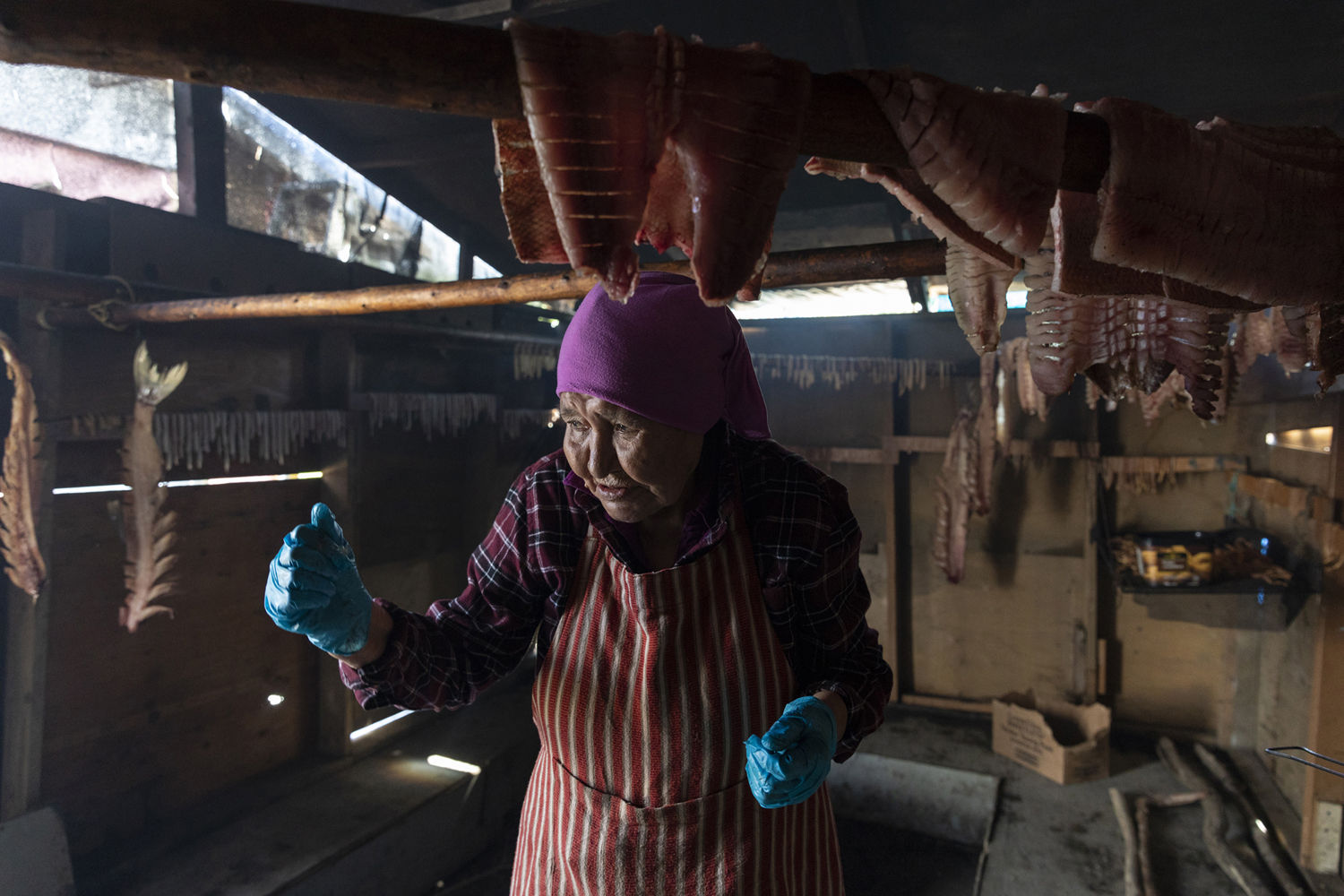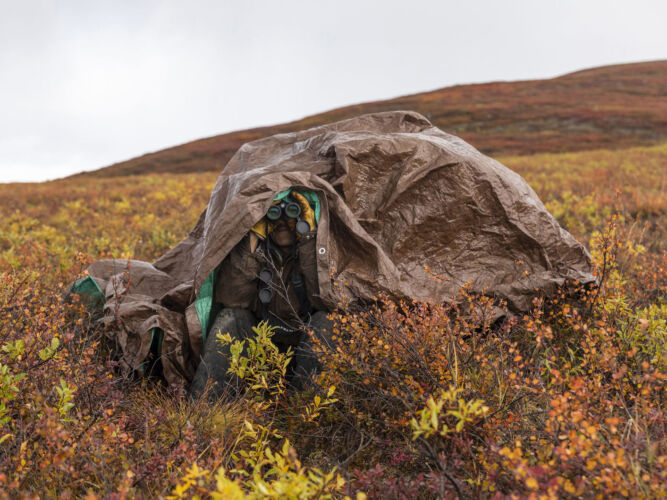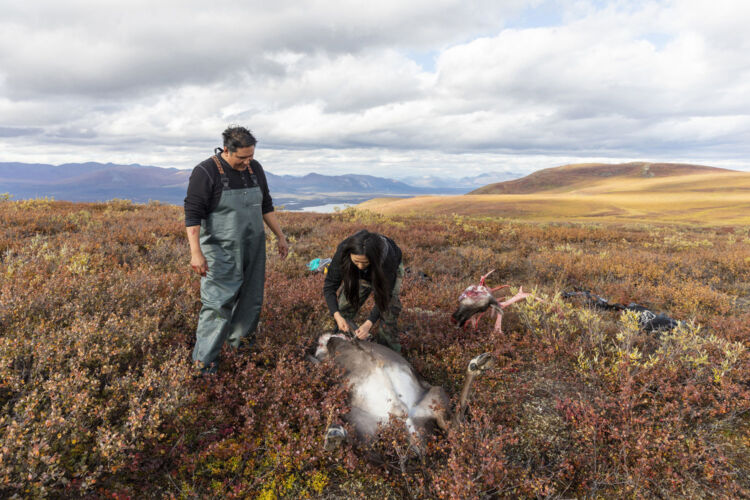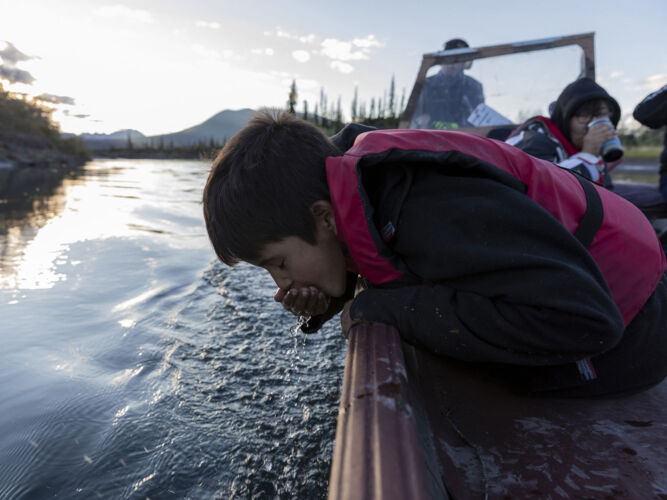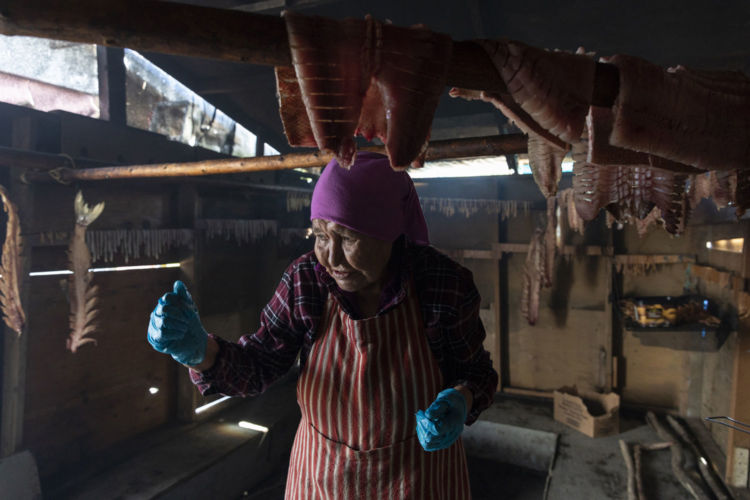project STATEMENT
This project was photographed on the homelands of the Neets’aii (Arctic Village) and Tetlit (Fort McPherson) Gwich’in, the traditional custodians of these areas. The photographer wishes to respectfully honor their continued connection and responsibilities to the land.
For millennia, the Gwich’in (“people of the land”), in the northernmost parts of Alaska and Canada, have taken care of the land, animals, and relied on the Porcupine caribou herd. To the Gwich’in, caribou is not just their subsistence; it is central to who they are. They are caribou people. According to their stories, Gwich’in elders communicated and formed a pact with the caribou, agreeing to look after the wellbeing of one another. They believe a caribou’s heart is part human and a Gwich’in heart is part caribou. Their fates are intertwined.
Since 1988, the Gwich’in have been fighting to protect the coastal plains of the Arctic National Wildlife Refuge from industrial development, a sacred place they call “Iizhik Gwats’an Gwandaii Goodlit” (The Sacred Place Where Life Begins). In December 2017, President Trump authorized the opening of the Arctic National Wildlife Refuge to oil and gas development, sidelining decades of political debate. Aggressive steps have since been taken to fast-track development. The Bureau of Land Management even held meetings about lease sales and seismic testing during the partial government shutdown.
For the Gwich’in the only adequate food is food that comes from the land – caribou, moose, fish, and berries, making up 80% of their diet. Trimble Gilbert, Traditional Chief of Arctic Village, says “To my people, wilderness is not a luxury or indulgence. It is a necessity. We feed our families and sustain our culture by living on the land, taking only what we need and caring for our clean air, clean water and abundant wildlife.” As Jerrald John, a hunter in Arctic Village put it, “I can buy a steak for $30 that will only feed me or I can buy a box of shells for $30 and feed my entire community.” Making caribou an integral source of food in a region where a loaf of white bread can cost $9.
To the Gwich’in, protecting the caribou and their sacred land is a matter of human rights; the survival of the Gwich’in Nation is at stake.


